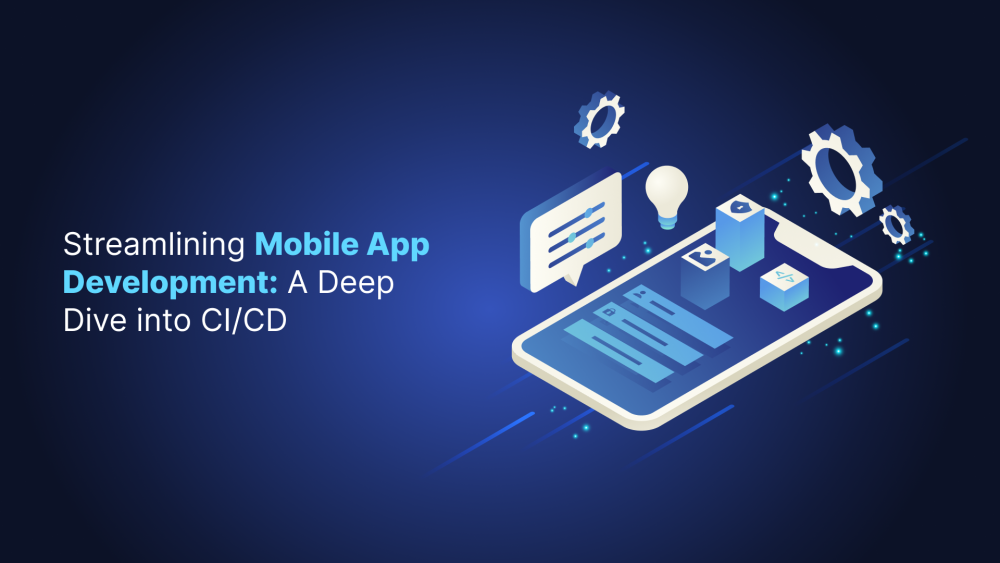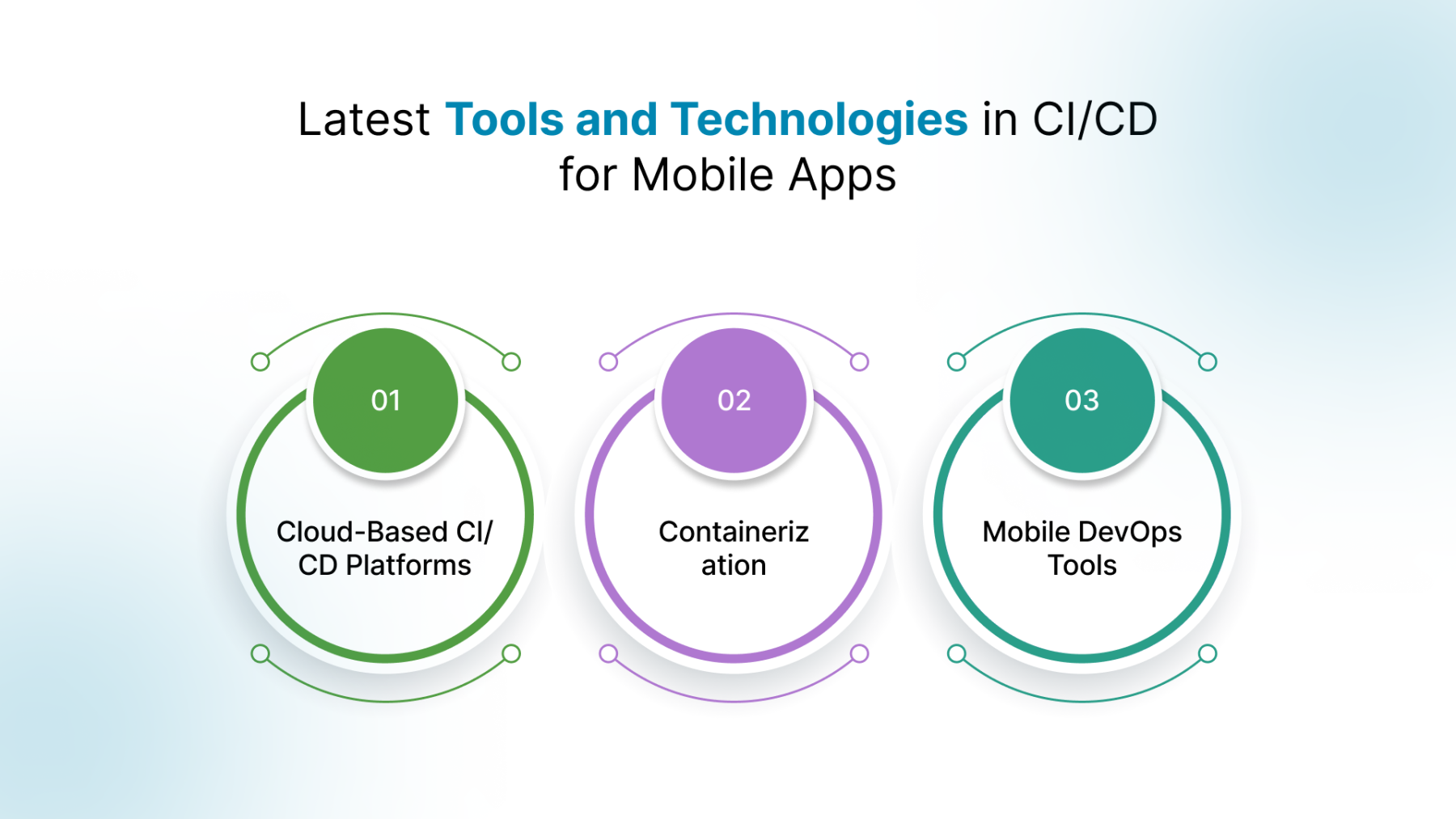In today's fast-paced mobile landscape, delivering high-quality apps quickly and efficiently is paramount. Continuous Integration and Continuous Delivery (CI/CD) has become an indispensable practice for mobile app development teams, enabling them to automate repetitive tasks, accelerate release cycles, and ensure consistent app quality. This blog post delves into the world of CI/CD for mobile apps, exploring its core principles, benefits, implementation details, and the latest tools and technologies shaping the landscape.
What is CI/CD and Why is it Crucial for Mobile Apps?
CI/CD refers to a set of automated practices that streamline the software development lifecycle. Here's a breakdown of its two key components:
-
Continuous Integration (CI): Every code change made by a developer is automatically integrated into a central repository, triggering a build and test pipeline. This ensures early detection and resolution of integration issues, preventing them from snowballing into larger problems later.
-
Continuous Delivery (CD): Once code passes the automated tests in the CI pipeline, it's automatically packaged and deployed to a staging environment. This allows for rigorous quality checks and user acceptance testing before pushing the final build to production.
Why is CI/CD crucial for mobile apps? Here are some compelling reasons:
-
Faster Release Cycles: By automating tedious tasks, CI/CD pipelines significantly reduce the time it takes to get new features and bug fixes into users' hands. Studies show that businesses using CI/CD can deploy code up to 50 times more frequently, leading to a competitive edge.
-
Improved Quality: Automated testing throughout the CI/CD pipeline helps catch bugs early, reducing the chances of defects reaching production. This translates to a more stable and reliable app experience for users.
-
Enhanced Collaboration: CI/CD fosters smoother collaboration within development teams. Developers can integrate their code more frequently without worrying about breaking the build, leading to a more cohesive development process.
-
Reduced Risk: By automating deployments, CI/CD minimizes the risk of human error that can occur during manual deployments. This ensures consistent and reliable releases.
Implementing a CI/CD Pipeline for Mobile Apps
Here's a breakdown of the typical stages involved in a CI/CD pipeline for mobile apps:
-
Code Commit: A developer commits their code changes to a central version control system like Git.
-
Build & Test: The CI server automatically triggers the build process, which compiles the code and runs unit tests, code quality checks, and potentially UI tests.
-
Deployment: If all tests pass, the CI server automatically deploys the build to a staging environment.
-
Manual Testing & Approval: QA testers and stakeholders perform manual testing on the new build in the staging environment.
-
Production Deployment: Upon approval, the build is automatically deployed to the production environment, making it available to users.
-
Integration with Development Tools: Popular mobile development tools like Android Studio and Xcode integrate seamlessly with CI/CD pipelines. These tools can provide functionalities like automated code signing, provisioning profiles for iOS builds, and generation of app store assets.
Benefits and Use Cases of CI/CD for Different Mobile App Industries
CI/CD offers a multitude of benefits across various mobile app domains:
-
E-commerce: Faster delivery of new features and bug fixes for a seamless shopping experience.
-
Fintech: Streamlined deployments for secure and reliable financial transactions.
-
Gaming: Rapid rollouts of new content updates and bug patches to keep users engaged.
-
Healthcare: Efficient delivery of critical app updates for improved patient care and medical workflows.
-
Social Media: Quicker introduction of new features and functionalities to maintain user engagement.
Here's a specific example: A social media app can leverage CI/CD to automate the process of building, testing, and deploying new features like filters, chat functionalities, or personalized feeds. This allows them to rapidly iterate and experiment with new features without compromising app stability, keeping users hooked.
Latest Tools and Technologies in CI/CD for Mobile Apps
The CI/CD landscape for mobile apps is constantly evolving. Here are some of the latest tools and technologies making waves:
-
Cloud-Based CI/CD Platforms: Platforms like Jenkins X, CircleCI, and Travis CI offer comprehensive solutions for building, testing, and deploying mobile apps in the cloud. These platforms integrate seamlessly with popular cloud providers and offer a user-friendly interface for managing pipelines.
-
Containerization: Technologies like Docker enable containerized builds, ensuring consistent environments across development, testing, and production stages. This minimizes the risk of environment-specific bugs.
-
Mobile DevOps Tools: Specialized tools like AppCenter and Bitrise cater specifically to the needs of CI/CD implementation
Disadvantages and Considerations of CI/CD for Mobile Apps
While CI/CD offers significant advantages, it's essential to consider some potential drawbacks:
-
Initial Investment: Setting up a robust CI/CD pipeline requires an initial investment in tools, infrastructure, and training for developers.
-
Complexity: Managing complex CI/CD pipelines with numerous dependencies can be challenging, especially for smaller teams.
-
Security Concerns: Automated deployments necessitate robust security measures throughout the pipeline to prevent unauthorized access or vulnerabilities.
Here are some additional factors to consider when implementing CI/CD:
-
Team Size and Skillset: Smaller teams might benefit from a simpler CI/CD setup, while larger teams can leverage more complex pipelines.
-
Project Requirements: The complexity of the CI/CD pipeline should align with the specific needs and scope of the mobile app project.
-
Testing Strategy: A robust testing strategy, including unit tests, integration tests, and UI/UX testing, is crucial for a successful CI/CD implementation.
Conclusion: Embracing CI/CD for a Competitive Edge
In conclusion, CI/CD has become an indispensable practice for mobile app development teams in today's competitive landscape. By automating repetitive tasks, streamlining workflows, and ensuring consistent app quality, CI/CD empowers teams to deliver high-quality apps faster. As the mobile app development landscape evolves, embracing CI/CD and leveraging the latest tools and technologies will be crucial for building successful and sustainable mobile applications.



